
What is the Kirkwall Scroll?
The Kirkwall Scroll is a hand-painted floor cloth depicting a myriad of symbolism – Masonic and otherwise.
It hangs on the west wall of the temple of Lodge Kirkwall Kilwinning No. 38(2) in Orkney, Scotland, but at 18ft 6in long and 5ft 6in wide it is too large to be displayed fully and is stored in scroll form.
The scroll is composed of a full-width central strip stitched at each side to two half-width side strips.
It has been described as a ‘teaching’ scroll.

What follows is a paper written by the Rev. J. B. Craven, P.M., for AQC Vol 10, 1897. It was edited by G. W. SPETH, P.A.G.D.O., SEC and his notes are included.
KIRKWALL KILWINNING LODGE No. 382 AND ITS REMARKABLE SCROLL.
BY BRO. THE REV. J. B. CRAVEN, P.M.
THE Lodge Kirkwall Kilwinning No. 382 was founded on the 1st day of October, 1736, by ” John Berrihill, free Meason from the antient Ludge of Stirline, and Wm. Meldrum, from the Lodge of Dumfermline.
” These two brethren, having admitted other four, the six formed themselves ” into a proper court ” of which Mr. Alexander Baikie, Merchant in Kirkwall, was the first Master.
The Lodge obtained a regular charter from Grand Lodge of Scotland on 1st December, 1740, which is signed by William St. Clair, of Roslin, Grand Master.
The original charter is still carefully preserved in the Lodge, along with the curious Scroll presently to be referred to, and most of the old minutes of meeting and accounts of the Treasurers.
For many years the meetings were held in an Upper Room of the Old Town Hall, and latterly in the Old Town Hall itself.
On August 26th, 1887, the present hall was duly opened and consecrated.
The Lodge also possess a curious old box, bearing an inscription in gilt letters, and the date 1736.
It is ornamented with fine old claspings of iron work, and has two old locks requiring separate keys.
In the minutes of the Lodge we find mention in 1747 of ” Thurso Kilwinning” long since extinct.
In 1759 of ” Royall Arch King Solomon’s Lodge, No. 2, New York.” of which a drawing is given herewith, measures 18 feet 6 inches in length, and 5 feet 6. inches in width.
The material of which it is composed is a strong linen, and consists of a full width of cloth in the centre with a divided width sewn along each side.
It occupies the west wall of the Lodge room, but the height of the apartment is not sufficient to show the whole scroll at one time.
It is very roughly painted in oil : the emblems down the centre being mainly in pale blue, but the top panel shows some attempt to imitate nature, the hills being brown, the sea green, the trees brown, the ground reddish, Eve and the animals and fishes pink.
On each side of the centre strip runs a ribbon of three colours, blue, yellow, and green, the blue being inside.
On the left side the rivers and cities are green, the trees and hills brown, and the same may be said of the other side, the tents and symbols being however blue.
The margin all round is a dark slate colour. The border on the spectator’s left hand would seem to represent a map of the wanderings of the Hebrews until their settlement in Egypt.
The rivers Tigris and Euphrates run down the centre, through a pastoral country almost devoid of cities, but in the lowermost panel we are landed in Egypt, with the “Nillus” running through it, and many cities and buildings depicted.
The right hand border should apparently be read from the bottom to the top, and seems to pourtray [sic] the wanderings of the Israelites in the desert.
The central riband is not a river but evidently a road and is marked off in years, beginning at year 1, and ending at year 46.
We start from the Land of Midian and Mount Sinai, and have the first camp, the fall of Manna, a graveyard, the Waters of the Rock, the worship of the Golden Calf, Sepulchre of Sarah, of Aaron, the elevation of the Serpent, &c, &c, while at the 46th year the road branches into numerous smaller paths, one leading to a building which probably is intended for the Temple at Jerusalem.
Both margins, especially the light hand one, are covered with place and city names, but Bro. R. Muir, who has kindly collated our drawing with the original for me, writes that:
“ The names appear to be of more modern date than the scroll itself, and have not been all written at the same time even, the ink is different and fresher in certain instances, and some of the writing is plainly by a different hand.“
The central panels speak for themselves, they commence at the top with Eve and the animals in the Garden of Eden, but why Adam is omitted would be difficult to say, and end at the bottom with the Craft degrees.
There are several cryptograms, some of which I have decyphered [sic], but others have eluded my skill.
At the very top is one such word, and another will be found at the base of the hour-glass like figure in the second panel.
On the cornice of the altar within the Arch, is a third. The next panel shows a cryptogram on the face of the altar, which I have partially solved, the chief difficulty consisting in the fact that many of the characters are incorrectly depicted.
But making the needful alterations it reads:
I am hath sent me unto you.
I am that I am ; I am the Rose
of Sharon and the Lilly of the vally.
Hegee as her hejah.
I am that I am or I will bee that I will bee.
Jaldadaiah.
I have italicised 4 words in the body of the inscription, because I can make no sense of them, or even suggest any corrections in the writing which would make sense.
I have merely transliterated them as they stand. The last word of all is in exactly the same case, but I am inclined to think that it was intended for Halleluiah.
To the left of this is a something which might be a highlander’s feather bonnet, or a fountain, or even a tree, with a scroll beneath.
On the ribbon is a word thrice repeated, which if written in the same cypher would read, Jugee Jugee Jugee!
If not the same cypher, then it is almost impossible to guess what it means, as there is not enough of it to furnish a clue.
The words Three Three Three would obviously be possible, 1 and it may be an allusion to the 3 X 3 so well known in Masonry.
The altar in the lowest panel has also a cryptogram on its cornice and face, which, being transliterated without making any allow- ance for incorrect writing, reads;
1 Chronikils, 2d captr 48, 49.
Judges cgaptr 12, 6, 7.
Hensis chap1′ 4, 22.
1 Kings, chapr 7, 21.
Mashew Cgap1′, 16, 18.
This represents the kind of faults to be found in the verses given above ; they arise from the want of a dot, or the redundance of one, or from a line more or less in the different characters.
It may be worthy of consideration whether the original purpose of the scroll was not to serve as a floor cloth for the Lodge, for which its size would be suitable.
The earliest form of our modern moveable tracing board was that of a floor cloth, consisting of various symbolical designs, of which the mosaic pavement was usually, though not always, a feature.
The actual tracing board, sometimes called also a square, was blank.
Gradually the design was transferred to the board, and the floor-cloth preserved only the pavement.
If this supposition be correct, the date of the scroll would fall into the first half of the eighteenth century, or very little later.
Failing some clue, which we can scarcely hope to find except at Kirkwall itself, its origin is likely to remain a mystery.
The scroll can scarcely have been intended to hang on the wall, as it does now ; unless, indeed, a lodge chamber 20 feet high was contemplated !
—Gr. W. Speth.

Image of the Kirkwall Scroll hanging in the temple of Lodge Kirkwall Kilwinning No. 38(2) in Orkney
IMAGE CREDIT: © Lodge Kirkwall Kilwinning
The symbolism
According to various sources, including Rev. Craven, George W. Speth and William Reginald Day amongst others, the symbolism is thus: in the left border – reading from top to bottom – there appears to show the Biblical passage of the Israelites before they arrived in Egypt.
The right shows their wanderings in the wilderness after the Exodus, with the route marked in years from 1-46.
The central cloth is clearly divided into seven painted scenes. From top to bottom it appears to depict:
1) A naked woman (presumed to be Eve?) sits under a tree surrounded by animals. In the distance we can make out a scene of the ocean or lake, filled with fish of varying shapes and sizes, beyond which are mountains. Above this is the canopy of heaven, with sun, moon and stars and a cloud bearing Hebrew letters.
2) What appears to be a step pyramid above which is a mounted cross, topped by a rainbow and surrounded by Masonic and (possibly) alchemical symbols.
3) An illustration of what could be the Last Judgement.

The Last Judgement By William Blake. The William Blake Archive, Public Domain
IMAGE LINKED: wikimedia Attribution 4.0 International (CC BY 4.0)
4) A layout of the Tabernacle of the Ark of the Covenant.

5) An altar with pillars to each side and cherubim very similar to those on the arms of the Antient Grand Lodge of England, the Grand Lodge of Ireland and the United Grand Lodge of England (according to William Reginald Day).
6) An altar surrounded by symbols
7) The bottom section depicts an altar flanked by two pillars and familiar Masonic symbols.
Needless to say, there has been much interpretation – and over-interpretation – of the scroll.
The debate on the origins – Medieval Masonic masterpiece or 18th century floor cloth?
Lodge Kirkwall Kilwinning minutes of 27 December 1785 state:
‘Bro. William Graeme, visiting brother from Lodge no 128 Ancient Constitution of England was at his own desire admitted to become a member of this Lodge, and he accordingly signed the articles and Rules thereof’.
Seven months later he donated a floor cloth to the lodge, now generally assumed to be the Kirkwall Scroll.
Archivist and Masonic historian Robert Cooper has presented evidence arguing that the scroll was made by William Graeme, or under his direction, and he dates it to the latter part of the 18th century on the basis of a detailed analysis of its symbolism.
Cooper’s contribution was in response to claims of mediaeval origin for the scroll.
Andrew Sinclair, a descendent of the Scottish St Clair barony, and leading proponent of Freemasonry’s descent from the Knights Templar, hailed it as a great mediaeval treasure, comparable with the Mappa Mundi in Hereford Cathedral.
Sinclair hails from the St Clairs (Sinclairs), owners since 1446 of Rosslyn Chapel, in Scotland, well-known for its Masonic connections and, of course, a pilgrimage site for fans of Dan Brown’s novel The Da Vinci Code.
When questioned, Rosslyn Chapel’s exhibition director Bob Brydon, remarked in The Herald (July 2000):
‘The operative side of the craft, connected with the trade guilds and stone masons, was also strongly associated with the St Clairs…so there’s little doubt the Kirkwall Scroll has very significant implications.’
But he is not convinced the scroll is fifteenth century, saying, ‘It’s quite feasible it’s a copy of an earlier document.’
Another descendent of the St Clair family, businessman Niven Sinclair, agrees on certain points:
‘The symbolically Masonic content which ties in with the Knights Templar is in the central panel. I’m convinced the outer panels are more biblically connected later additions.”
The Daily Telegraph (July 2000) reported that after Sinclair ‘was allowed access to the Scroll and took a piece of it a away for carbon testing’, he then suggested that the scroll, being in his estimation worth £8 million, be removed from its home at Lodge Kirkwall Kilwinning No. 38(2) – for ‘safekeeping‘.
A spokesman for the Lodge responded by saying that:
‘Anything is priceless if you’ve got a market for it, so his sensation-making claims of it being worth millions mean nothing…
It is priceless to us and we have safeguarded it well for more than two and a half centuries.
No-one can have access without special permission and it is protected from the light, so we would urge – “Leave well alone”.’
Masonic author Robert Lomas, a supporter of the early dating, now sees part of the Ancient and Accepted Scottish Rite in one of the altar inscriptions and much of the symbolism, which would place the document to the second half of the Eighteenth century in a conventional history of the Rite.
When the University of Oxford research laboratory conducted the dating, on two occasions, they discovered that:
‘The first sample taken from the outside edge of the material was possibly eighteenth or early nineteenth century.
The second piece which came from the central panel produced a much older date – fifteenth or early sixteenth century.”
It is surmised then that the cloth had been joined at some point in history, the newer side panels affixed to the central, older panel.
Realistically, it seems agreement on the scroll, its age, context and symbolism is still some way off.
Footnotes
References
https://en.wikipedia.org/wiki/Masonic_manuscripts#Kirkwall_Scroll
The Daily Telegraph, 22 July 2000 https://www.laird.org.uk/Sinclair/Kirkwall_Scroll.aspx accessed 27/09/2020
The Herald, 21 July 2000 https:/www.heraldscotland.com/news/12189574.wall-hanging-revealed-as-priceless-masonic-relic-and-artefact-worth-millions accessed 27/09/2020
Further Reading
The Kirkwall Scroll
by Andrew Sinclair
https://skirret.com/archive/misc/misc-k/kirkwood_scroll.html
The Not-So-Secret Scroll – Priceless Relic or Floorcloth?
http://www.orkneyjar.com/history/historicalfigures/henrysinclair/kirkwallscroll2.htm


The Kirkwall Scroll
Own your own copy of one of the world’s more important Masonic artefacts.
The Kirkwall Scroll, is made of three pieces of hand-painted, strong linen sewn together and throughout. Radiocarbon dated to the early 15th century this treasure has been carefully protected by generations of Orkney Freemasons. The complete hanging cloth is eighteen feet six inches long and five feet six inches wide.
It consists of a centre strip which contains beautifully drawn Masonic symbols, and two outer strips which appear to be some kind of maps.
Over the years there have been many theories about the scroll. Is this a very early Tracing Board or Floor Cloth?
The symbolism of the centre strip does seem to show the progression of the initiate from degree of Entered Apprentice through to the rank of Sovereign Grand Inspector General in the Ancient and Accepted Scottish Rite or Rose Croix.
Could the scroll itself be evidence of these higher degree being older than previously thought and proof that they originated from Scotland? If this is so then why does the scroll appear to contain something very similar to the coat of arms of the Grand Lodge of England?
Perhaps the candidate would stand of the section appropriate to his degree or the cloth was unrolled to display the relevant section? Much is contained on the scroll in Enochian alphabet and other Masonic ciphers. Perhaps in time when these are decoded more will be discovered.
But what of the maps on the side panels? Are these navigation charts? Due to the Orkneys links with the Knights Templar some people have wondered what these could lead to. With many symbols yet to be fully explored which seem to be inspired by Pagan, Kabbalistic, and Christian teachings it seems the scroll still has more mysteries to teach us.
Now you have a chance to decode the Kirkwall Scroll with our 29cm by 98cm high Quality Digital Print.

The Kirkwall Scroll
by Treveo Jackson
The Jacksons’ commentary on the Kirkwall Scroll doesn’t flow easily but I do feel that this is how the path unfolds, not by being spoon fed but by misdirection an allusion.
They admit that many rabbit holes have been left out and I admit that I have been down quite a few new ones myself.
For the costa of a cup of coffee you will see the origin of the all seeing eye and the connection with Michael Angelo.

The Secret Scroll
by Andrew Sinclair
Comprehensive and scholarly … Andrew Sinclair has written a fascinating book’ – The Literary Review ‘
Andrew Sinclair guides us through this romantic story that has preoccupied poets, priests and pilgrims from Zeus to Jung and Indiana Jones. This is an absorbing history that transcends the frontiers and creeds of cultures and religions’ – The Independent
Although references to this famous order of military knights rarely appears in standard histories of the time, a great deal of information about them can be gleaned from other, more esoteric sources, such as sculpture and architecture.
Suppressed by Philip of France out of greed, the Templars were gradually driven underground in more and more European countries.
Yet they continued to exist, still guarding the knowledge and relics that they had gathered for the defence of the Holy Land.
It is this that connects all this to Henry St Clair, Earl of Orkney and Grand Master of the Knights Templar and discoverer of America.
All of these threads come together in one extraordinary scroll still in Kirkwall which reveals in full the secrets of the Knights Templar.
Recent Articles: manuscripts
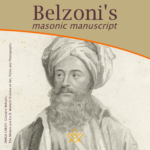 Belzoni's Masonic Manuscript is a valuable resource for anyone interested in the history and practices of Freemasonry, as well as for those interested in the broader cultural and social history of the early 19th century. The manuscript provides a rare glimpse into the inner workings of the organization, and offers insights into its beliefs, values, and practices. It is a fascinating document that continues to captivate and intrigue scholars and freemasons alike. |
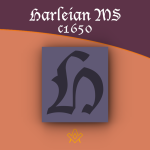 There are two known 'Harleian Manuscripts' which allude to the earliest constitutions of Masonry. |
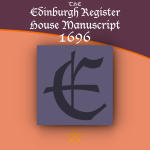 The Edinburgh Register House Manuscript (1696) At the time the manuscript was written in Edinburgh, Scotland was the home to various lodges, including those of the operative Masons of Edinburgh, it provides an interesting Masonic Catechism with questions and answers, a genuine ritual of admission. |
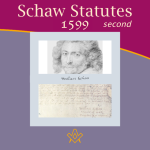 The Second William Schaw Statutes (1599) We look at a modern transcript of the second William Schaw Statutes dated 1599. An operative masons charter for stone cutters and layers in the building industry of the time. A set of rules and regulations including penalties. |
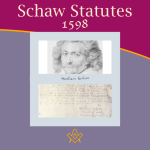 The First William Schaw Statutes (1598) We look at a modern transcript of the first William Schaw Statutes dated 1598. An operative masons charter for stone cutters and layers in the building industry of the time. |
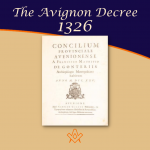 The Avignon Decree (1326) Papal Bull The several Papal declarations against Freemasons after the formation of the Grand lodge in England in 1717 are well known. The Avignon Decree (1326), published 400 years prior, is the earliest known document to set out the Catholic Church's intentions… |
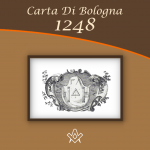 The Bologna Statutes Or Carta Di Bologna The Bologna Statutes or Carta Di Bologna 1248 - Masonic document of Operative Masonry, the oldest one found to date. |
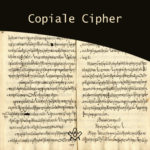 What is the connection between the Copiale Cipher and the great enlightened society of oculists ? |
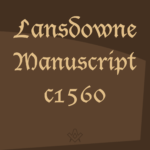 A very foolish legendary account of the origins of the Order of Freemasonry |
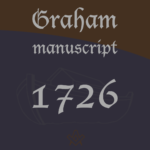 The Graham Manuscript dating from 1726 is an early Masonic document that calls upon Noah and this 3 sons in respect to Masonry, an alternative allegory to the Hiram legend. |
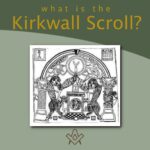 The Kirkwall Scroll is a hand-painted floor cloth depicting a myriad of symbolism |
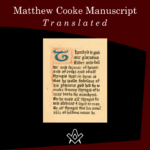 Matthew Cooke Manuscript was written c1450. A transcript of a yet older document, written by a Speculative Mason |
 Are you interested in the 'musty old documents of the past'? This article first appeared in The Builder magazine,1923 |
masonic knowledge
to be a better citizen of the world
share the square with two brothers

click image to open email app on mobile device










